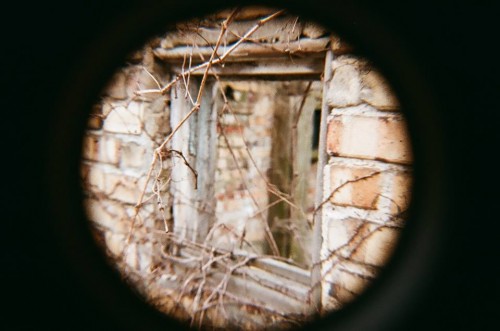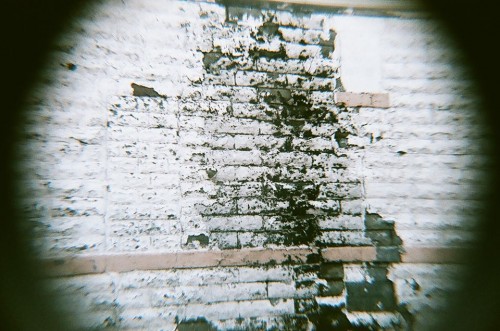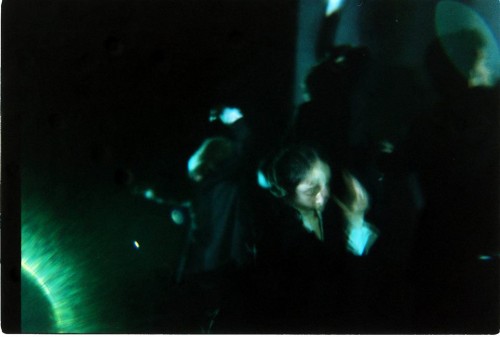(Canadian) Sunday Service: Laura Broadbent poem
NOTE: Canadian poetry! For no particular reason, I am taking over Melissa Broder’s column for the month of the October to spotlight poems by contemporary Canadian writers. Today’s poet is Laura Broadbent, whose (sharp, funny, underated) debut collection, Oh There You I Can’t See You Is It Raining?, was published late last year by Invisible Publishing.
Oh There You Are I Can’t See You Is It Raining?
1.
Supple with incoherence, I have not
learned how to people myself.
Lose any hope. Above all, lose any hope.
2.
I’ve never enjoyed a party in my life.
The meaning of this hits a little too deep.
The only women for me live a tonal complexity.
3.
The biggest fact about anyone is their mother.
I know this is getting a little complicated.
4.
Art school students love art school students.
There is something unutterably terrible
About art school students.
5.
He likes it when my nails are short and clean.
Since it’s love there’s nothing easy about it
so I threw my wine glass at him.
Old wounds and their flatulence.
6.
No one told me it was problematic to be a woman
until I started getting treated like one.
I Googled ‘Why are all Aquarius men jerks?’
I wasn’t the first.
7.
When I try to describe you
my mouth gets an E for Effort.
I invite you for a dip and you think
its an invitation to drowning.
Find some bearings
then ostensibly learn to keep them.
8.
Obligatory fun is ostensibly fun.
The project of the intellectuals.
Don’t open an intellectual
unless you want to be killed.
9.
To lose those I love most.
What other lessons are there –
how to make a perfect gazpacho?
I still believe in forces.
10.
Anger is one of my charming knacks.
Also panic for no discernable reason.
I remember things with my whole body.
Men like it when I ostensibly behave.
11.
Supple with incoherence
Art school students are
terrible
at making the perfect
gazpacho.
12.
Obligatory fun gets an E
for Effort. When you’ve lost
those you love most,
your only hope is in
charming knacks.
13.
The biggest fact is a little complicated.
So throw your wine glass at it
then clean your nails and Google
‘ostensible women.’
14.
I invited you for a dip
then you treat me like a woman.
Google: ‘old wounds
AND tonal complexity.’
15.
Getting killed: obligatory fun.
No need to get all emotional
and intellectual about it.
16.
The project of the intellectuals:
the terrible fact of
women and flatulence.
17.
Everyone’s mother is problematic
trying to do something about
feeling unloved.
18.
Art school students’ projects are parties.
Be on guard for the projects of art students
19.
Men like when my whole body
is ostensible.
20.
Remembering things
is an invitation to drowning.
Laura Broadbent was raised in Stratford, Ontario and has resided in Montreal since 2005. Her first book of poetry Oh There You Are I Can’t See You Is It Raining? (Invisible Publishing, 2012) won the 2012 Robert Kroetsch Award for Innovative Poetry.
in a recent Open Letter to the Poetry Foundation the poet Sandra Simonds states:
Last year the Poetry Foundation’s income was over seven million dollars and the foundation’s total assets are well above 150 million dollars. I was disappointed to learn that the Poetry Foundation gives only around $7,500 annually to poets in need.
A petition to The Poetry Foundation that you can sign if you want has been set up at Change.org
(It currently has 177 signatures)
Writing That Makes You Feel Like You’re Being Groomed
***
When John Ebersole reads work he terms “Grocery Store Poetry” (GSP – which includes also, for John, Linda Pastan, Billy Collins and, most immediately, present-day Thomas Lux) he says “I also get the sick feeling like I’m being groomed.” This quote comes from a little Q and A I recently did with John because when I read his review of the new Thomas Lux book (you can read it here on HTMLGIANT) I was struck by (hello, Paul Cunningham) how upset, how disturbed John seemed to be. And this reminded me of how I feel when I read certain people. Disturbed. And sometimes, for sure also, like I’m being groomed. (shiver, shiver).
This is particularly the case when I read Whitman and experience not just the great POETRY but also the feeling of a clammy arm slipping around me over and over in a cheap movie theater, of a pale tongue in my ear, of a breathy voice trying to massage my entire being into submission. Nice, easy and compliant. And that’s creepy, yeah. And creepy, also, to think (and know) that while I’m reading Whitman and experiencing the tremendous virtuosity of imagination and spirit that a part of him’s masturbating in the row behind me.
But, you know what, it’s ok, because it’s Whitman and I accept the fact that he’s grooming me. That he wants and needs me to surrender to his voice, his work, his divine right (yeah, he thought he was a new Jesus for America). But, for Christ’s Sake, we’re talking now about writing like late-career Thomas Lux!
***
Rauan: I believe you’re suggesting that “Grocery Store Poetry” written by Lux, Pastan, Collins, etc, isn’t attractive and vital because even though the world’s always been in turmoil “the way we apprehend that turmoil has changed and changed dramatically.” And you’re suggesting then I think that we need more a riskier, stronger sort of poetry (a poetry of derangement?) because “globalization and the relentless whiplashes of information rearrange us.” Your thoughts on this please?
John: Wittgenstein once wrote – I’m fucking kidding. I’m less READ MORE >
October 12th, 2013 / 1:12 pm
Flood Relief

There was a flood in Colorado and NewLights Press, which specializes in high-quality handmade books, is giving all the money they make this weekend to help fix things. Their books are beautiful. You should check it out.
Hearing Hearing: A Review of Jacob Kirkegaard’s Labyrinthitis (2008)
“We do not yet know what a sonic body can do.” -Steve Goodman
In a collection of notes entitled The 1914 Box, Marcel Duchamp said that “one can look at seeing; one can’t hear hearing.” (Bloch 1974) Working within a lineage that includes Cage, Schaeffer Lucier, and other artists, Jacob Kirkegaard’s 2008 sound installation Labyrinthitis articulates a response to Duchamp’s claim, demonstrating through the phenomenon of distortion product otoacoustic emissions (DPOAE) that one can in fact ‘hear hearing.’ Further, in articulating the space of human hearing, and ‘playing’ the human ear “just like an acoustic instrument,” (Kirkegaard 2008) Labyrinthitis questions the canonical notion of hearing as a passive process, a “one-way route of transduction,” (Kahn 2008) and grounds the semioticity of listening as distinguished from hearing in a materialist approach which eschews representation, using sound not as symbol but as intervention (Lindblom 2010). In this sense the work is firmly grounded in the tradition of site-specific sound art, creating a discourse space in which technology and the body, artist and audience, exist not on opposite sides of dichotomies but on a continuum.
The contents of Duchamp’s 1914 box (photo courtesy of: http://www.tate.org.uk).
`What did Duchamp mean by “looking at seeing?” He meant to describe “the particular interpretative effect which accompanies optical illusions.” (Betancourt 2003) For example, in the Rotoreliefs, the contrast between a static disc and a moving disc creates a visual oscillation, allowing us to ‘look’ at the mechanism of seeing and understand a number of constraints: that the illusion is only possible for us when the relief is in motion; and that when the relief is in motion, we cannot distinguish the two discs— we can only see them as one (ibid.).With the knowledge that there are in fact two discs but that, when the oscillation occurs, we apprehend them as one, we can infer that the configurational relationship between the two activated discs causes the limits of our perception to ‘synthesize’ a new image entirely from our perceptual processes: in this way we can ‘look at seeing.’ (Ehrenzweig, 24)
Then we can begin to interpret the phenomenon, as Betancourt states. This also allows for a new, non-teleological artistic-perceptual structure (ibid.), and the discourse domain which this kind of art articulates is not predicated on phenomena as representations but on an exploration of the material aspects of the phenomena themselves, the ability to observe the sensory mediation of experience, and its limits. Though the groundwork had been laid by Schaeffer, Cage, and Lucier, as well as through Dianne Deutsch‘s discovery of the octave illusion in 1973, and Maryanne Amacher‘s work with otoacoustic emissions in 1999, until Kirkegaard’s Labyrinthitis, there had arguably been no sound-oriented process explicitly analogous to optical illusions which would cause one to perceive a mismatch between stimulus and receptor activity in the human ear, and there had been not been as cogent a response to the passive connotation of hearing which is so pervasive in the historical musical narrative.
In 1978, physicist David Kemp demonstrated for the first time in a scientific context the phenomenon of otoacoustic emissions (OAEs) (Kemp 1978). These are audible sounds which the inner ear itself generates, and which can either be spontaneous (SOAE) or evoked by pure tones (EOAE). Commissioned by the Medical Museion in Copenhagen, Kirkegaard’s Labyrinthitis is composed on the basis of the latter, particularly distortion product emissions (DPOAEs). In fact, similar findings were reported in the 18th century by Guiseppe Tartini, who while investigating violin double stops discovered that two simultaneously-played tones may cause a listener to perceive a third tone (Tartini 1754). Indeed, it should be noted that OAE’s are anomalous only insofar as they are audible: the the very process of hearing involves the vibration of the cochlea’s hairs when two tones enter the ear, which causes electro-chemical responses to the vibrations; in certain cases this vibration causes “movement of the connected basilar membranes,” which in turn causes the ear to emit sounds as a byproduct of hearing (Fischer 2008). Thus OAE’s could be considered ‘amplified’ instances of a generalized property of the human ear.
(Photo courtesy of: http://fonik.dk/works/labyrinthitis.html)
Looking to use this phenomenon as a compositional impetus, Kirkegaard inserted tiny speakers and a microphone into his left ear. The input is a pair of primary frequencies in “a ratio of 1 – 1.2,” (Kirkegaard 2007) the interaction of which causes a DPOAE in Kirkegaard’s inner ear. The microphone picks up this and other resultant DPOAEs and amplifies them enormously, outputting them to the audience as they arise. The audience will have its own DPOAE’s when confronted with Kirkegaard’s, so much so that, at a loud volume, the piece seems to turn one’s ears into a bright resonant magnet, sound buzzing ticklishly out of it, at least in my listening experience. The receivers of sound in fact become producers of sound in the act of receiving, and this creates a potentially-endless feedback loop (which actually renders compositional decisions largely arbitrary). Therefore, the piece is a musical analog to the concept of Duchamp’s Rotoreliefs, since it builds its discourse not from sound as representation but from the actual sound phenomena, and since the configuration of the pure tones, like the static and moving disc, causes a mismatch between input and receptor activity, creating a space in which the resultant phenomenon, DPOAE’s, can be explored and encoded with meaning. It is a rebuttal to Duchamp’s claim that one can’t hear hearing.
October 11th, 2013 / 11:05 am
Two Releases From Unlikely Books
Unlikely Books had two new releases in September, We’ll See Who Seduces Whom, with poetry by geniu-maniac wordsmith Tom Bradley, and truly twisted art by David Aronson; and Pleth, with textual poetry by Marthe Reed and artfully composed poetry cells by j/j hastain. Unlikely, which has been around as an online journal since 1998, began publishing books in 2005. After a relocation to Louisiana by Publisher Jonathan Penton in 2010, and a reevaluation of the current and upcoming publishing markets, neo-pulp online journal Unlikely has come back as Unlikely Stories: Episode IV, bigger and badder than ever, rebranding itself as a champion of transgressive literature.
Bizarro writer, political gadfly, prodigious poet Tom Bradley has done it again, once more turning the improbable into the compelling, showing us why he’s the guy mainstream writers wish they had the guts to be. This time, he goes it with a partner, nationally acclaimed artist David Aronson, who has perfected a quirky marriage between lowbrow and fine art elements. In Aronson’s art, Bradley found the perfect inspiration for his own unique brand of creative insanity. As Bradley told Aronson at one point in their long and fruitful association, “Each of your pictures contains a hundred different stories.”
In We’ll See Who Seduces Whom, Bradley explicates this statement by spinning hundreds of splintered tales based on Aronson’s pathologically delightful drawings. “We had one unspoken rule from the beginning,” says Bradley, “that I would have no conversation with the artist about the ‘meaning’ (if any) of his work.”
A complex and multi-layered dance between these two offbeat geniuses, We’ll See takes off in a high octane rampage, thunders across the defiled plains of Kansas, corners around the pope, takes multiple shots at our flabulous and star-struck culture, and brings you back home in time for a three-martini lunch, looking brain-raped and fuddled, woefully holding the book up and shaking it to see if anything more is to be had, secreted within its unholy pages.
“I invite you to unravel yourself,” says Bradley at one point, then proceeds to show the reader just how to accomplish that unraveling, with a flaying wit and a diabolical ability to pull half spun threads of story together and weave them into a sparse and breathtaking structure, balanced right on the precipice of reason. And then, in a change that occurs at the speed of light, lines come together into nice neat verses and hum along like down-scribed scat, smooth and charming and doing just what verses of poetry are supposed to do.
The interim sanity is never more than a quick flash, however, and soon Bradley begins another ascent into the heights of his own particularly cerebral madness, goaded on by Aronson’s precisely rendered and singularly disturbing images. Aronson takes the homey draftsmanship of an Edward Lear, and weds this deceptively innocuous style to clothonic images and odd juxtapositions of innocence and depravity, images from which Bradley wrings a universe entire of despair and death, demons and stinger-tailed angels to entice and horrify.
We’ll See Who Seduces Whom is a challenge from artist to writer and back again, and it’s impossible to read and not want to play along with Bradley and Aronson as they lob incendiary verbal and visual challenges at each other. In lesser hands a project like this could have devolved into self-absorbed dribble. But Aronson, who’s digital animation has been featured on MTV2 and Fuse and whose drawings and illustrations have appeared in Silkmilk, Ritual, Inside Artzine, Khooligan, and BigNews, has the sophistication to match well known poet and Bizarro author Bradley’s writing chops. In the end, it’s the reader who is wonderfully seduced into this amazing feast of words and images, coming away deliciously haunted and ready for more. A highly recommended read.
In Unlikely’s second offering, pleth, established poets j/j hastain and Marthe Reed collaborate on a work that is both visual and verbal. The title, a shortened form of the word plethora, is used by hastain to convey the writer’s multiple senses of self and as a reconfiguration of the he/she binary. Reed selected it as the title as a reference to the unfolding journey of gender awareness and identification captured within the book. The poems inside are smoky with intent, capturing the undulating dance of together/apart, brought to point by the fierce intellect of hastain and Reed.
hastain, well known for xyr cross-genre topics and post-gender advocacy, begins each call-and-response segment with collages that are both suggestive and introspective, drawing in the imagination with glimpses of sensual curves and ambiguous shadings and coloration – is that a hint of decay, or simply the delicate layering of tissue? Across each visual piece, hastain strews a spare handful of words, sometimes illuminating, sometimes an intriguing, intimate glimpse of internal dialog of pain and promise.
Marthe Reed, former creative writing program director at the University of Louisiana at Lafayette and co-publisher of Black Radish Books, then gives her textual response in poetry so carefully honed, so precisely luminous, that each word resonates – with hastain’s images, with per words, and with Reed’s own scrupulously crafted poetry. At its heart, pleth is a passionate dialog about the crash point between cyber-entropic dissipation and the regenerative power of connection.
There are complex nuances in both hastain’s and Reed’s work, fragmented glimpses of post-apocalyptic wounds, of a desperate last grasp at the tattered shreds of a brave new world’s disavowed humanity, but both hastain and Reed offer, above all else, a sense of beauty, and of hope that shines through.
In a 2011 interview with Rob McLennan, Reed says modestly that it is not clear to her that poetry is any effective means of grappling with the larger social issues of the society around her. But it appears that in pleth, she has found her place. “We are …” Reed says, “tangent velocities abrading the knots.”
—
Deb Hoag is a writer with several published novels, including Queer and Loathing on the Yellow Brick Road and Crashin’ the Real, and the editor of Women Writing the Weird, an anthology of weird fiction by writers identifying as women. Her novels, as well as Women Writing the Weird and Women Writing the Weird II: Dreadful Daughters, are available at Dog Horn Publishing.
Are you Alice Munro or Bret Easton Ellis?
I scored 22/36. You?
**Cheaters will be fatally punished.
Recognizing Beauty: An Attempt to Connect What I love About Jazz, Poetry, Drag, Film & Pittsburgh, PA
Thanks to Connor Hestdalen and Sara Coffey for introducing me to everyone and everything and to Janice Lee for giving me this space to gather.
**

I fell in love with Moon Baby the same way I fell in love with poetry, my partner, jazz and the city of Pittsburgh.
I was sleeping with the polished veneers and parallel streets of Columbus where I was writing short poetic verse and making even shorter abstract films. But secretly, I was dreaming of the crumbling storefronts and uneven landscapes that embodied Pittsburgh.
I was in love with the humble way Pittsburgh presented itself and directly was turned off by the willingness of Columbus to replace a historic building with a new ATM. (Don’t get me wrong, Columbus is a great city with a lot going on and stands alone as an incredibly accepting Queer Mecca for the small towns and states that surround it and I’m not here to be too hard on the place, but rather I am here in an attempt to figure out what made Pittsburgh so captivating.)

On one fateful visit to Pittsburgh I was led to an event put on by the jazz dancers of the Pillow Project and it was through their instinctive movements and intuitive collaboration that I was first able to formulate what I wanted from my surroundings.
I proceeded to visit monthly for these jazz nights, excited by the possibility to witness a physical embodiment of the beauty that I was seeing ooze from the broken bricks and old steel.
By planning my trips around these Second Saturday performances, I was inadvertently shaping my Pittsburgh to be a community of artists and doers motivated to work together to fulfill meaningful projects and works of art. So when I was felicitously freed from the shackles of higher education I naturally and quite thoughtlessly announced my move to Pittsburgh. It wasn’t a week later that my roommates had found my replacement and I was bound by my impassioned proposal. Without a plan or a home or a job I moved across state lines armed only with film cameras and a jazz-influenced disposition that shaped the way I interacted with and viewed the people I met. I was to start seeing the people I met not just as friends and acquaintances but more importantly as potential partners in both art and love.

Pillow Project’s improvisational example solidified my views of Pittsburgh and a TED talk on embracing vulnerability in your everyday by Brené Brown helped me put a word to what I was finding beautiful in Pittsburgh’s unfinished appearance.
Vulnerability literally means being able to be wounded. And in the unguarded and honest people I was beginning to connect with in my new city I was seeing the same thing that I had been referring to as Pittsburgh.
In Columbus I had worked with some talented artists and queens, particularly Mathilda Longfellow, with whom I’ve finished some beautiful and hilarious work. I didn’t have that same familiarity with Pittsburgh’s drag scene, but my partner knew and introduced me to Moon Baby with a hunch that we’d work together well.
There is a term in the drag community called gagging, meaning to enjoy a queen so thoroughly you could choke and die on them. I was gagged quite literally the first night I saw Moon Baby perform as she dance, lip-synced and ate her own pubes. But it was through those tears of disgust and awe that I recognized the same vulnerability that I cultivating myself. READ MORE >
October 10th, 2013 / 11:00 am



